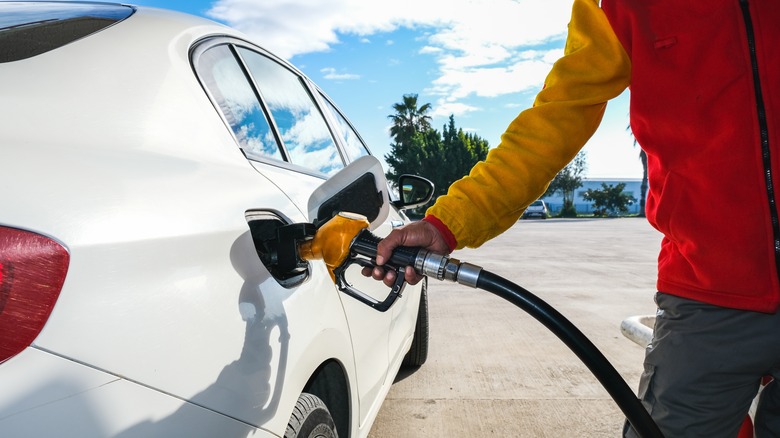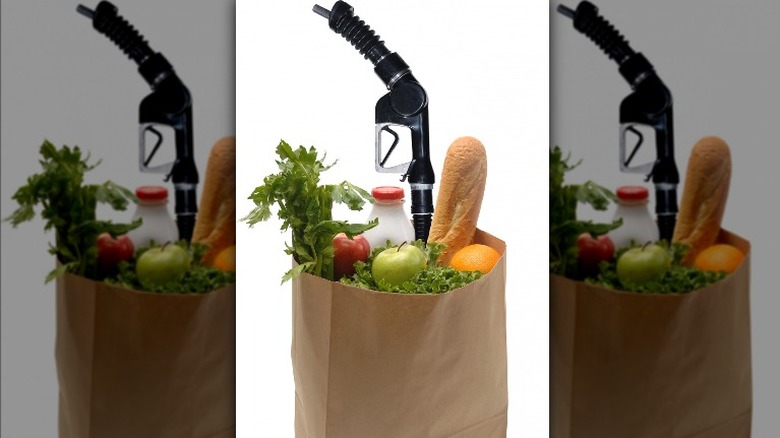What Decreasing Gas Prices Could Mean For The Food Industry
Consumers have noticed a decrease in the prices of some goods and services with envy as their grocery bill stays at a budget-busting level. The cost of living and eating is holding stubbornly at a highly inflated rate, but CNBC notes that there may be a glimmer of hope on the horizon following lowered gas prices. Amid some of the highest inflation in 40 years, shoppers, food retailers, and restaurateurs will take whatever they can get.
Lower prices at the gas pump have consumers hoping they can drive on over to the grocery store and see a drop in the cost of food as well. At the beginning of the summer, gas prices finally dropped below $5 a gallon, thanks in part to President Biden's plan to allow the use of a 15% ethanol-gasoline blend. The increased need for corn to produce ethanol may have helped decrease gas prices, but it adversely affected the price of meat as livestock relies on the same corn for feed, proving that it's hard to win in the current economy.
Blowing budgets at the gas pump directly affects what consumers can buy and where they shop for food, forcing some customers to reprioritize spending habits and turn to discount and wholesale stores to make ends meet. Food retailers have also faced increased costs from high fuel prices that affect the supply chain and translate to higher prices. Now that the national average for a gallon of gas is $3.71 (per CNBC), shoppers and retailers are hopeful that the lowered fuel cost will translate into better prices for the food industry.
Food costs might decrease, but slowly
Record inflation, especially at the gas pump, has affected food purchases, from a ribeye steak at the grocery store to a bag of chips at the gas station. According to CNBC, the Federal Reserve's implementation of interest rate hikes has finally seen high inflation levels start to budge, and while food prices remain high, consumers are optimistic that lowered costs might be an indicator of better days to come for the food industry.
Despite lower gas prices, the cost of food is still expected to increase over the next year, but at a 0.8% lower rate than was initially anticipated. Still, more affordable gas prices coupled with three-year inflation expectations that dropped from 3.2% in July to 2.8% in August have consumers feeling optimistic.
Economist Julia Coronado told NPR that decreasing gas prices have eased the strain on consumers' wallets, allowing them to spend more in specific markets. When it comes to the food industry, there has been some movement in food markets on the wholesale level. It takes time for cost decreases to trickle down and lower prices of food on the shelves at the local grocery store, but the small economic improvements signal some relief in the future. Another possible rate increase from the Fed and continued wage growth might continue to cool inflation to the point that food retailers and shoppers might finally get some relief.

